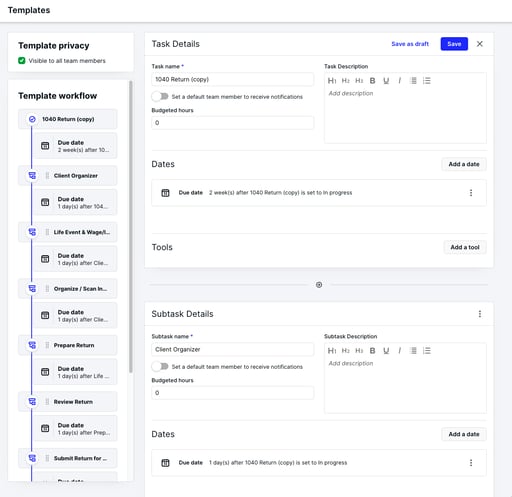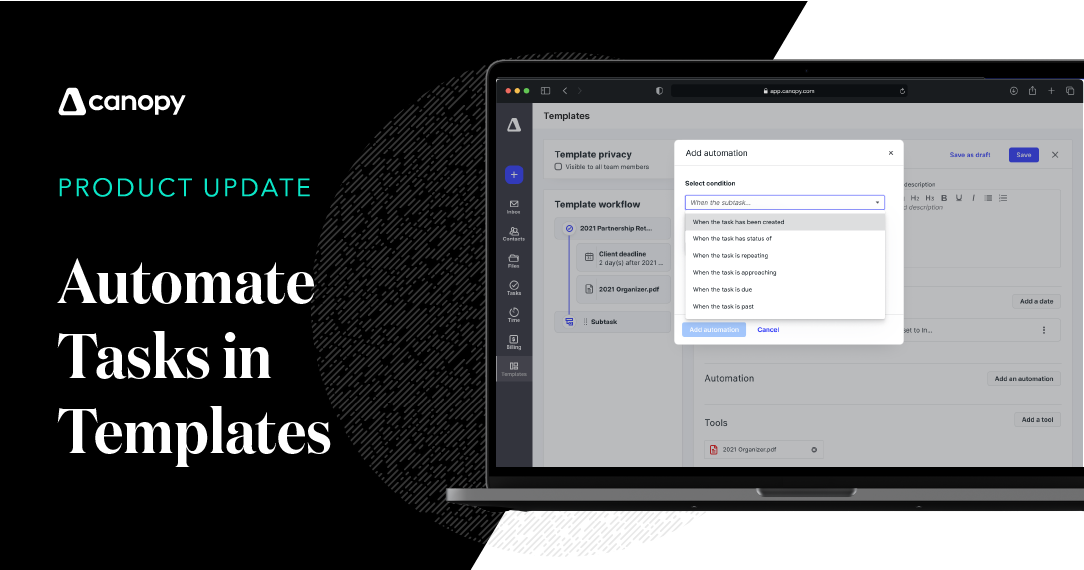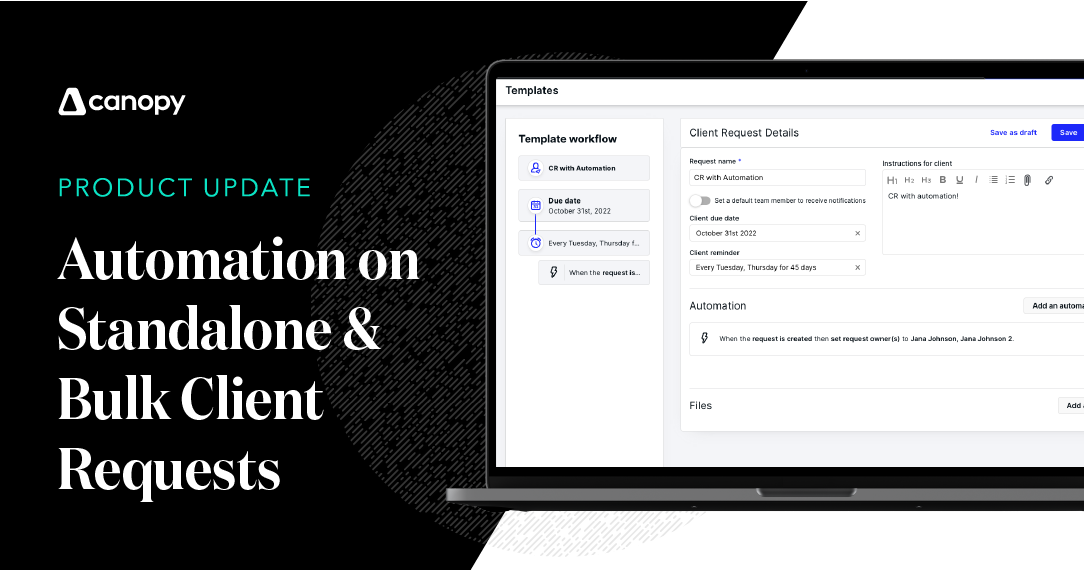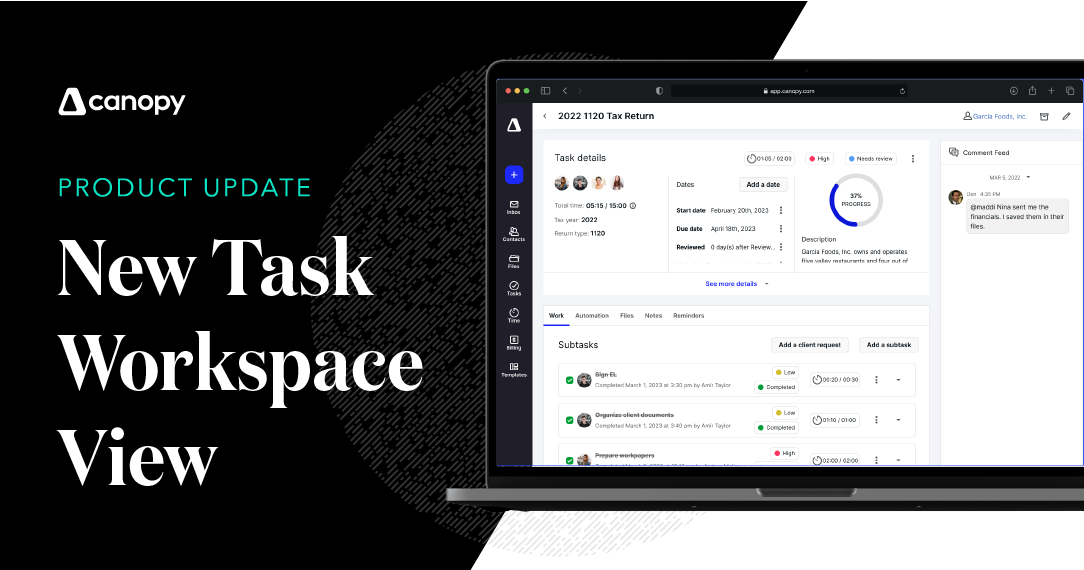What's new:
Recently we released the ability to automate tasks, subtasks, and client requests as subtasks within the Canopy Workflow module. We’re excited to share that you can now apply automated workflow rules within task templates. This is a game changer! Now automation conditions and actions can be applied on tasks and subtasks within Workflow templates, saving your firm time.
Along with the ability to apply automation rules within Workflow templates, we have also redesigned the task template experience. This new redesign has created a cleaner way to view and build your workflow templates. It also adds the ability to easily move or add subtasks within the task template. We hope these additions and improvements will add to your goals of increasing efficiency and streamlining efforts at your firm.

Important Note: As you set up automation rules inside a template that will be applied to a bulk tasks, please be aware of the following considerations.
-
-
- If you’re applying automation related to sending a client request action when a condition is met, you’ll need to make sure that ALL of the contacts that you send those to previously have a client portal set up
- If you’re sending out emails as an automation action when a condition is met, you’ll need to make sure the contact has a default email previously set up in Canopy
- If you’re assigning a specific teammate (user) to be assigned to a task as an action when a condition is met, that user must previously be assigned to that contact
-
Why it matters:
Setting up automation rules within workflow templates truly unlocks multiple benefits for your firm. The first notable benefit is time savings. You have a lot of work to do for multiple clients. Many times your processes follow the same patterns, like preparing a tax return or closing out the books for month’s end to name a few.
In these cases and others, it can be advantageous to create templates to increase efficiency. Within those templates you can create automation rules to notify the next person of when a task is completed, change a status once a task changes, notify of an upcoming date, and more. When you go through the process to set these rules up and apply them to a template, you or your staff can utilize that same process and automated actions every time you go through that process—saving you time and manual effort!
No more having to manually create or recreate a process over and over. You save time not only in the setup and continued use of templates, but also in the actions your automations are set up to perform. Simply set up the desired conditions and actions within your template and easily use that over and over again in your repeating processes.
Not only will this help create consistency across your team and increase efficiency in your daily and seasonal work, but it can also make it easier for you or your staff to learn and implement Canopy within your firm. When a template exists, you can have your new or seasonal employees simply implement that task template when they are performing that repeatable process.
Where to find it:
Task Templates require users to have the Client Management and Workflow modules.








Get Our Latest Updates and News by Subscribing.
Join our email list for offers, and industry leading articles and content.